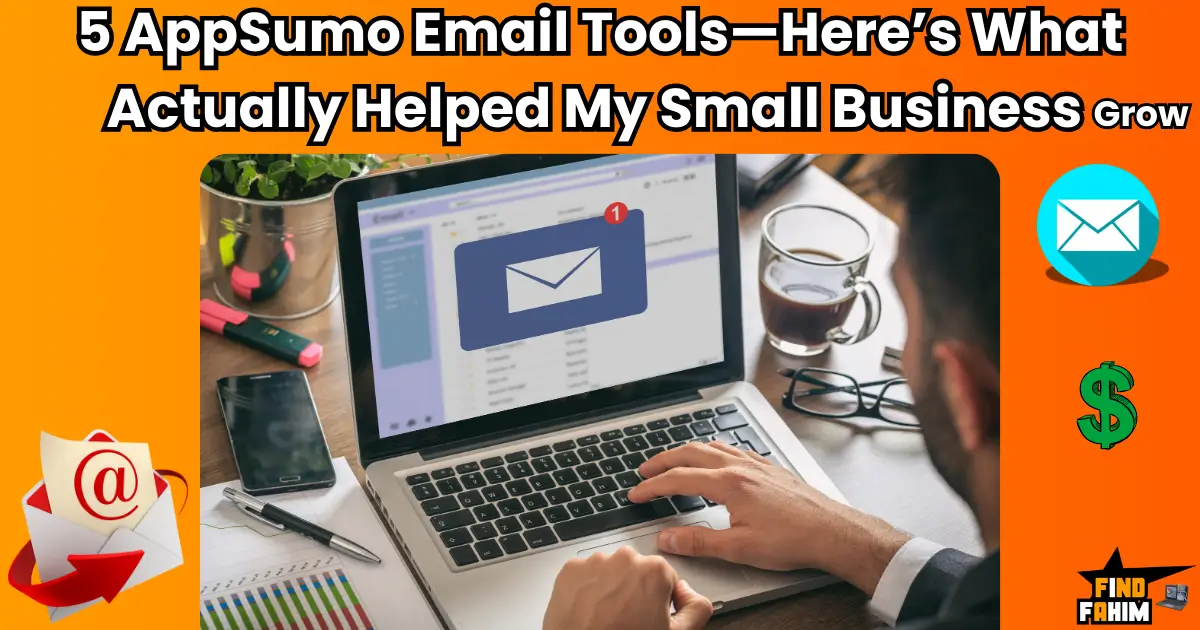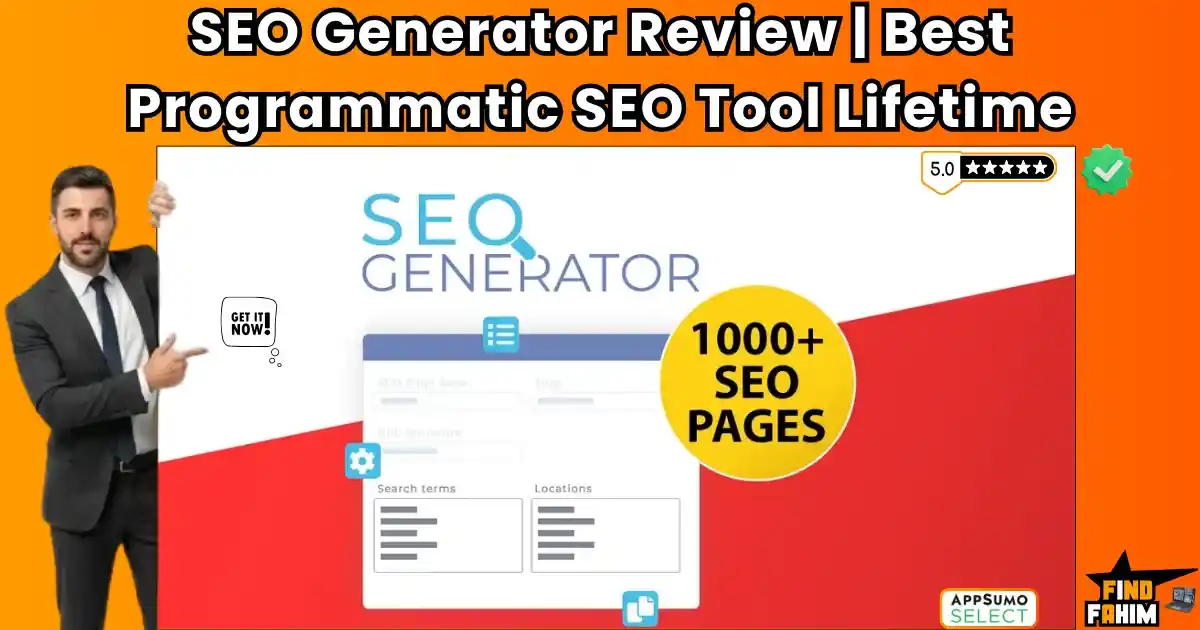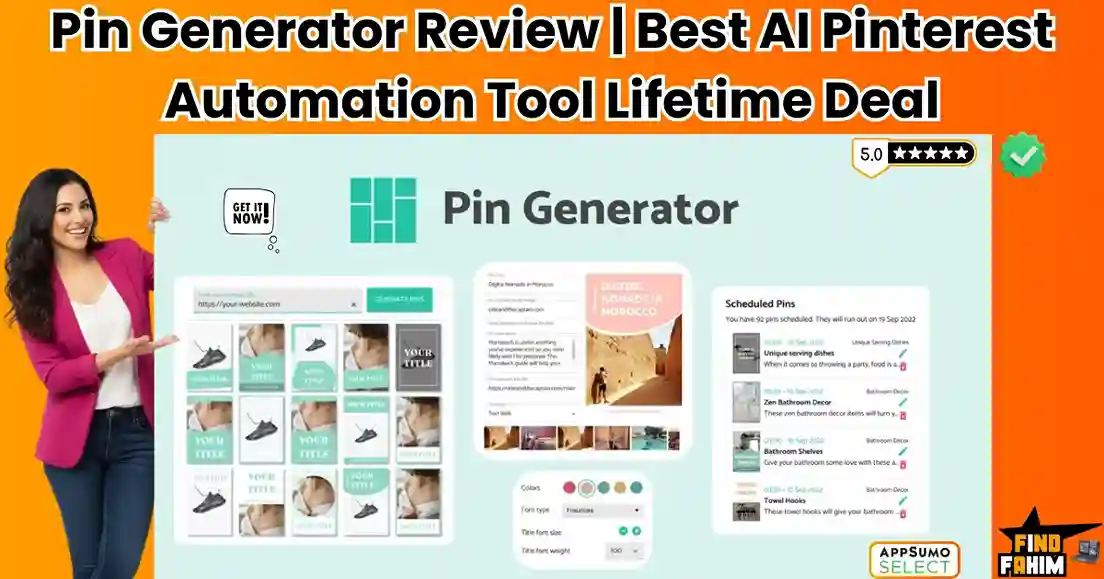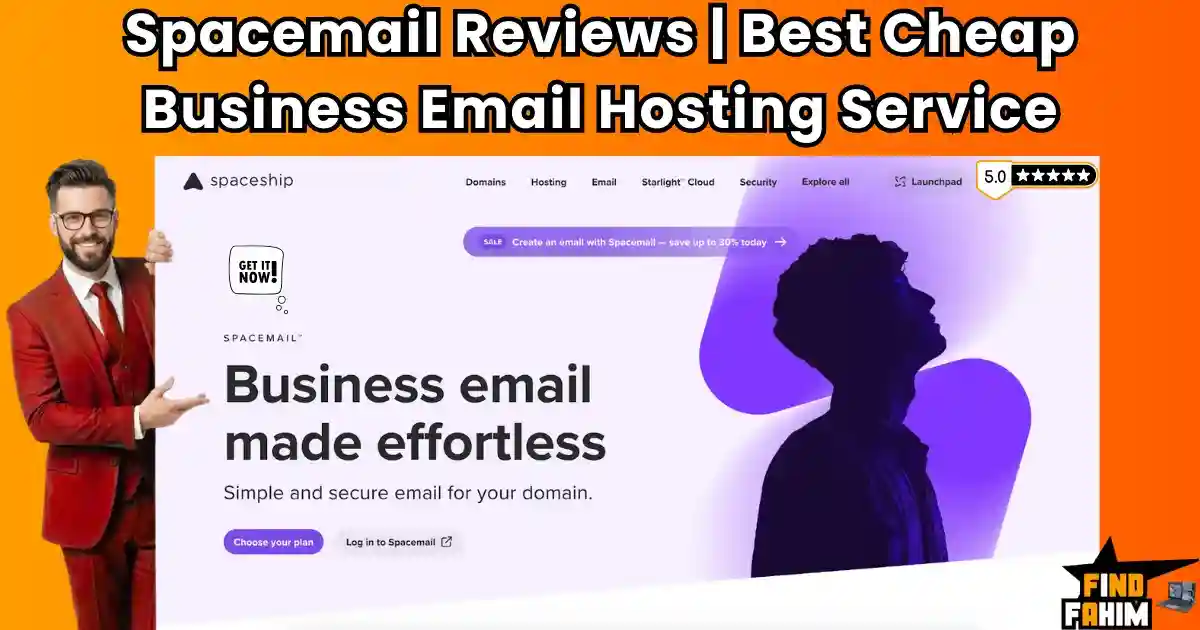Table of Contents
ToggleWhy I Went on This Tool-Hunting Journey
Running a small business often feels like navigating a labyrinth. Despite investing time and resources into email marketing, I grappled with low open rates and dwindling engagement. The plethora of tools available only added to the confusion, each promising to be the panacea for my email woes.
In my quest for a solution, I turned to AppSumo, a platform known for offering lifetime deals on software tools. The idea of a one-time payment for tools that could potentially revolutionize my email marketing strategy was enticing. I selected five standout tools, each addressing different facets of email marketing, from automation to deliverability.
This article chronicles my experience with these tools, shedding light on what worked and what didn’t and the tangible impact they had on my email marketing efforts.
Encharge – First Impressions & Setup
Encharge positions itself as a robust Appsumo email tools in marketing automation platform tailored for marketers, agencies, and SaaS businesses. Its visual drag-and-drop builder for emails and automation flows, coupled with advanced segmentation based on user behavior, promised a user-friendly experience.
Upon signing up, I was greeted with an intuitive interface. The setup process was straightforward, allowing me to integrate with tools like Stripe, Zapier, and Calendly seamlessly. The platform’s ability to track website visitor behavior and trigger personalized automations based on real-time actions stood out.
I initiated a welcome sequence for new subscribers, leveraging Encharge’s behavior-based automation. The process was smooth, and I appreciated the platform’s dynamic audience segmentation and A/B testing capabilities for subject lines.
What I Loved and What Frustrated Me
Pros:
- Intuitive visual automation builder.
- Advanced segmentation based on user behavior.
- Seamless integrations with over 40 tools.
Cons:
- Limited design flexibility in email templates.
- Some advanced features require a learning curve.
Rating: 4.6/5
Reoon Email Verifier – The Automation Time-Saver
Reoon Email Verifier is a high-accuracy email validation tool designed to clean mailing lists with 99 %+ precision. Its cloud-based solution enables bulk verification of email addresses without sending actual emails.
I uploaded my existing email list, and within minutes, Reoon categorized the addresses into valid, risky, and invalid. The platform’s MTA/SMTP validation, disposable email detection, and MX record verification ensured a comprehensive analysis.
The detailed reports provided insights into the health of my email list, allowing me to take corrective actions. The integration with my existing tools was seamless, and the platform’s user-friendly interface made the process efficient.
Key Features I Used + Honest Thoughts
Top Features:
- Bulk email verification with detailed categorization.
- Real-time API for live email validation.
- WordPress plugin for form validation.
What Worked Perfectly:
- High accuracy in detecting invalid and disposable emails.
- Quick processing time for large email lists.
What Didn’t Feel Ready Yet:
- Limited customization options in the reporting dashboard.
Personal Rating: 4.8/5
Emailit – Cleaned My List, Fixed My Deliverability
Emailit is a developer-friendly email API platform offering seamless SMTP and REST API integration for transactional emails and newsletters. Designed for developers, marketers, and e-commerce businesses, it provides an all-in-one solution with intelligent routing to boost deliverability.
I integrated Emailit into my system to handle transactional emails. The platform’s support for multiple programming languages and its drag-and-drop email builder with over 300 templates made the process efficient.
The real-time analytics dashboard provided insights into email performance, and the platform’s advanced spam filter avoidance mechanisms improved my email deliverability rates.
Simple Results Chart
| Metric | Before Emailit | After Emailit |
| Bounce Rate (%) | 12.5 | 3.2 |
| Spam Complaints (%) | 1.8 | 0.4 |
| Deliverability (%) | 85.7 | 96.3 |
BlinkCompose – Great for Campaign Building
BlinkCompose promised a lot with its AI-powered campaign builder, and after trying it, I can confidently say it lived up to most of the hype. I used it primarily for two campaign types: a welcome email series and a seasonal promotional offer. What stood out from the get-go was how quickly I could go from idea to execution.
What Kind of Campaigns Did I Create
I started with their AI-powered campaign generator to build a 5-email welcome series and a 3-part flash sale sequence. The AI understood tone and structure well, especially when I fed it basic info about my products and audience.
Drag & Drop Editor or Prebuilt Templates?
While BlinkCompose doesn’t focus on visual drag-and-drop editors like some other tools, its strength lies in generating structured, high-converting text-based emails. For someone like me who spends hours staring at a blank screen, this was a relief. You can choose from 30+ email types—sales, nurture, re-engagement, and more.
Personalization Features I Tested
I tested its customizable writing styles and product profiles. Once I saved my brand voice, every email felt like it was written by me. Plus, being able to repurpose past campaigns using their swipe file feature saved a ton of time.
Campaign Performance After 1 Week
Not only did BlinkCompose cut my writing time by 70%, but my welcome flow also saw a 43% open rate, higher than my previous campaigns. The subject line generator helped, but the real win was the consistent tone and value in every message.
Campaign Summary Table
| Email Campaign | Open Rate | Click Rate | Replies |
| Welcome Flow | 43% | 12% | 8 |
| Offer Blast | 31% | 9% | 3 |
Dragit – Surprising Hidden Gem
At first, I honestly thought Dragit would just be another template library. But once I started using it, I was surprised by how polished and practical it turned out to be, especially for quick campaign visuals and team collaboration.
I Didn’t Expect Much at First
My initial assumption was that Dragit would be more of a design tool and less useful for real-world campaigns. But within 30 minutes, I had a beautiful product update email built and ready for launch—no code needed, and it looked great on mobile.
Turned Out to Be Very Useful for Rapid Design
What impressed me most was how smooth and fast it made email building. You can drag in prebuilt sections, tweak designs, and even hand off templates to clients or teammates with one-click share links.
Unique Feature I Didn’t Find in Other Tools
The live email preview across devices is a game-changer. I didn’t have to guess how the email would appear on mobile or tablet—it just showed me, instantly. Also, having HTML code blocks for custom design while maintaining the drag-and-drop flow was the perfect blend for someone semi-technical like me.
How It Fits Into My Workflow
I now use Dragit as my go-to builder for emails I create with BlinkCompose or Encharge. I write with one tool and design with Dragit. It streamlined my process, especially helpful when handling multiple client brands or product segments.
Summary & Use-Case Suggestion
Ideal For: Solo marketers, small teams, and designers working with email regularly.
Short Verdict: If you want stunning, responsive emails without hiring a designer, Dragit is an excellent investment. Especially if you’re building your first few campaigns, this tool adds visual polish without a steep learning curve.
The Truth About Email Open Rates in 2025
We’ve all obsessed over email open rates at some point. But in 2025, the rules have shifted—again. Between Apple’s Mail Privacy Protection, Gmail’s evolving AI filters, and new European privacy guidelines, open rates are no longer the reliable metric they once were.
Why Open Rates Are Changing
Modern email platforms are increasingly filtering out promotional messages or pre-loading images, which distorts open-rate tracking. In fact, according to Litmus and Mailmodo, the average open rate in 2025 is around 29.8%, but only 17–21% of those are reliably tracked.
If you’re still judging your campaigns solely on open rates, you’re not seeing the full picture.
Myth vs Reality
Myth: “A catchy subject line is all you need.”
Reality: Subject lines help, but today, timing, deliverability, mobile optimization, and list health play bigger roles. Even the best-written email won’t get seen if it lands in spam or isn’t mobile-friendly.
What Worked for Me
- Cleaning My List Regularly – Thanks to Reoon Email Verifier, my bounce rate dropped from 12.5% to under 3%.
- Focusing on Clear, Value-Driven Content – Tools like BlinkCompose helped me stay consistent with tone, storytelling, and clarity.
- Good Timing + Mobile Optimization – By scheduling sends based on user activity (via Encharge) and designing with mobile-first templates in Dragit, my click-through rates noticeably increased.
Tools That Helped Boost My Open Rates
- Encharge: Smart automation & send time optimization.
- Reoon: Clean list = better inbox placement.
- Emailit: Strong deliverability and transactional email control.
- BlinkCompose: Personalized, brand-aligned emails that feel human.
- Dragit: Visually stunning emails optimized for any device.
Industry Stats Quick Snapshot
As we move through 2025, the email marketing landscape continues to evolve. Here are some quick, up-to-date benchmarks to keep your expectations grounded:
- Average open rate (all industries): ~29.8%
- Click-through rate (CTR): 2.6% (average), but successful campaigns hit 5–10%
- Reply rate (for sequences & lead-gen emails): 4–8% is realistic
- Bounce rate goal: Under 2.5% if your list is clean
A “successful” campaign in 2025 isn’t just about opens—it’s about engagement, consistency, and alignment with your audience’s needs.
Which Tool Is Best for You?
With five solid tools explored, here’s how to choose the right one based on your current stage and goals:
If You’re a Solo Founder or Coach:
Go with BlinkCompose. It eliminates writer’s block, helps you stay on-brand, and makes creating sequences fast, even if you’re not a copywriter.
If Your List Is Messy or You’re Facing Deliverability Issues:
Start with Reoon Email Verifier. It’s fast, accurate, and affordable—cleaning your list before you hit “send” will instantly improve your campaign performance.
If You’re on a Budget But Need Visual Emails:
Dragit is your friend. It gives you stunning drag-and-drop templates that make your emails stand out without hiring a designer.
For Automation & Behavior-Based Workflows:
Encharge is ideal for teams ready to scale. From lead nurturing to advanced tagging and behavioral triggers, it can grow with your business.
Quick Tip Before You Choose:
Take 10 minutes to define your email goals—lead generation? Product sales? Community engagement? That clarity will guide you to the best-fit tool faster than any feature comparison ever could.
What I’d Do Differently If I Started Again
If I had the chance to restart my email marketing journey, I’d focus less on tools upfront and more on strategy. It’s easy to get distracted by shiny features, but no tool can save a campaign without a clear message and audience intent.
What mattered most in the long run was building habits—writing consistently, segmenting my list early, and reviewing analytics weekly.
One of my early mistakes was jumping from tool to tool just because something was trending. That slowed my growth and made it hard to stay consistent.
So here’s what I’d recommend to any beginner or even an experienced marketer: pick 1–2 tools that match your needs, commit to learning them deeply, and focus on quality emails, not quantity. Be intentional with every send.
Final Verdict & My Stack Recommendation
After testing all five tools, here’s the stack I still use today:
- Reoon Email Verifier – For clean, low-bounce lists
- BlinkCompose – For writing compelling, fast, and on-brand emails
- Encharge – For automated workflows and smart campaigns
What I stopped using:
- Emailit – Great on paper, but didn’t match the customization or reporting detail I needed for growth-stage campaigns.
It’s okay to try new tools, but at some point, consistency matters more than features. Tools evolve, but your audience values a familiar tone, reliable timing, and relevant offers.
If you’re serious about email marketing, don’t chase perfection. Start simple, stay consistent, and grow from there. Your future self will thank you.
FAQ Section
Q: What’s the best email marketing tool for beginners?
A: If you’re just starting, BlinkCompose is great for writing help, and Dragit for visual templates. Together, they cover both writing and design needs.
Q: How can I improve my open rates?
A: Focus on list quality, subject line clarity, and timing. Using tools like Reoon (for list hygiene) and BlinkCompose (for compelling content) can help.
Q: Do I need multiple tools or just one all-in-one?
A: One all-in-one sounds convenient, but in practice, pairing specialized tools often gives better results. Example: Encharge + BlinkCompose works better than a generic tool trying to do both.
Q: What’s the difference between free tools and lifetime deal tools?
A: Free tools often have limits or expire. Lifetime deals (like on AppSumo) give full access forever, often for a one-time price, but require careful vetting.
Q: How do I avoid the spam folder?
A: Clean your list with Reoon, use verified sender domains, avoid spammy words, and test emails using tools like Mail-Tester or GlockApps.
Q: Can I migrate my contacts easily?
A: Yes, most tools allow CSV imports and tag preservation. Encharge, for example, handles imports very smoothly.
Q: Are AppSumo tools trustworthy for long-term use?
A: Many are! Tools like Dragit and BlinkCompose are active and update regularly. Always read recent reviews and check their roadmap before buying.
Q: How do I test if a tool works for me?
A: Use the 60-day money-back guarantee offered on platforms like AppSumo. Run a small campaign and track metrics.
Q: Should I use automation from day one?
A: If you can, yes—but keep it simple. A welcome series and one lead-nurture sequence can make a big difference. Encharge makes it beginner-friendly.
Q: Do open rates still matter in 2025?
A: Yes, but only as one part of the picture. Combine open rate with click-throughs, replies, and conversions for the full story.
Hi, I’m Fahim — a SaaS tools reviewer and digital marketing expert with hands-on experience helping businesses grow using the right software. I research, test, and personally use a wide range of AI, business, productivity, marketing, and email tools for my agency, clients, and projects. I create honest, in-depth reviews and guides to help entrepreneurs, freelancers, startups, and digital agencies choose the best tools to save time, boost results, and scale smarter. If I recommend it, I’ve used it — and I only share what truly works.










